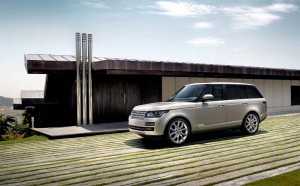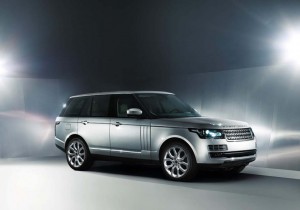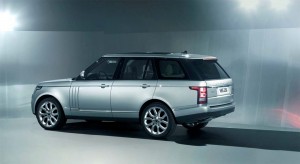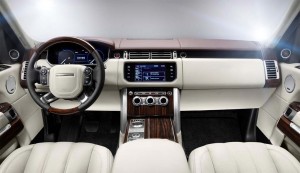It has long set the benchmark for the classic, full-sized SUV but it’s been a decade since Land Rover last rolled out a new version of its flagship ute and the market has changed dramatically since then. The wait is finally over.
The British maker is officially lifting the covers on the all-new 2013 Range Rover – and while the look might be familiar it’s not just a facelift. The new sport-ute has been re-engineered from the ground up, with the 2013 Range Rover adopting an all-aluminum body and platform. That, the maker claims, will translate into a lighter, more nimble – and more fuel-efficient – vehicle than the outgoing SUV.
Yet despite shedding a stunning 926 pounds of mass, Land Rover insists the new flagship will maintain its go-anywhere versatility while also delivering more of the comfort, convenience and safety features the typical owner is demanding for day-to-day use.
“The new Range Rover preserves the essential, unique character of the vehicle – that special blend of luxury, performance and unmatched all-terrain capability,” said John Edwards, Land Rover’s Global Brand Director. “However, its clean sheet design and revolutionary lightweight construction have enabled us to transform the experience for luxury vehicle customers, with a step change in comfort, refinement and handling.”
The Brits don’t change things often. This is only the fourth all-new Range Rover, the last coming when Jacques Nasser was still president of Ford – which owned the British ute maker until recently. This time, however, Indian maker Tata Motors has the chance to take credit having purchased Land Rover and its sibling Jaguar brand three years ago.
“This is a massive deal for this company,” said Andy Goss, president and CEO of Jaguar-Land Rover North America, during an interview with TheDetroitBureau.com.
According to Land Rover, the aluminum body shell is lighter than the steel body of a Mini Countryman. The overall unibody structure is 39% lighter than before, the overall vehicle dropping as much as 926 pounds depending upon market. The American version will maintain its 5.0-liter V-8 and lose 700 pounds, which will mean both better performance and improved mileage.
There will be a diesel for the European market, incidentally, though there are no current plans to bring the oil-burner to the States. But a senior LR official broadly hinted that the American market can expect to see more powertrain offerings in the years ahead. That’s likely to mean a V-6 option as well as a hybrid. And perhaps the maker will even rethink its diesel options considering the growing sales success of other European makers, such as Mercedes-Benz and BMW.
The basic shape of the iconic ute has received some modern updating. But what buyers may be more interested in is the added 4.7 inches of legroom.

The British maker hasn't released mileage numbers but hints the all-aluminum update will deliver notably better fuel economy.
“Designing the next generation Range Rover, following over forty years of success, came with a huge responsibility to protect the DNA of such an icon,” said Gerry McGovern, Land Rover Design Director and Chief Creative Officer. “Our design team worked incredibly hard to capture the elegant proportions and pure surfaces which have been a feature of the best Range Rover designs.”
Among the new technical updates are a new power-operated split liftgate and a new standard audiophile system designed by Britain’s renowned Meridian.
The new Range Rover gets an updated version of Terrain Response, meanwhile, a system that allows a driver to adjust everything from vehicle height to brake and throttle settings, as well as gearing, with the turn of a knob.
The 2013 Range Rover will reach U.S. dealers this coming December.



